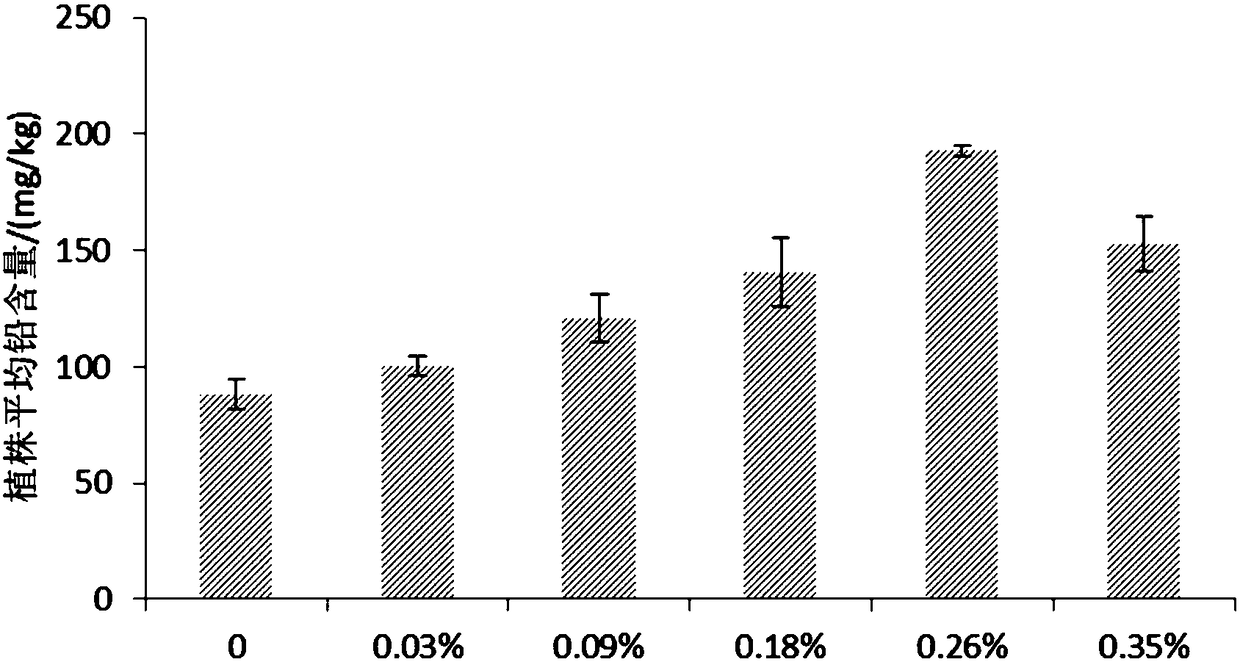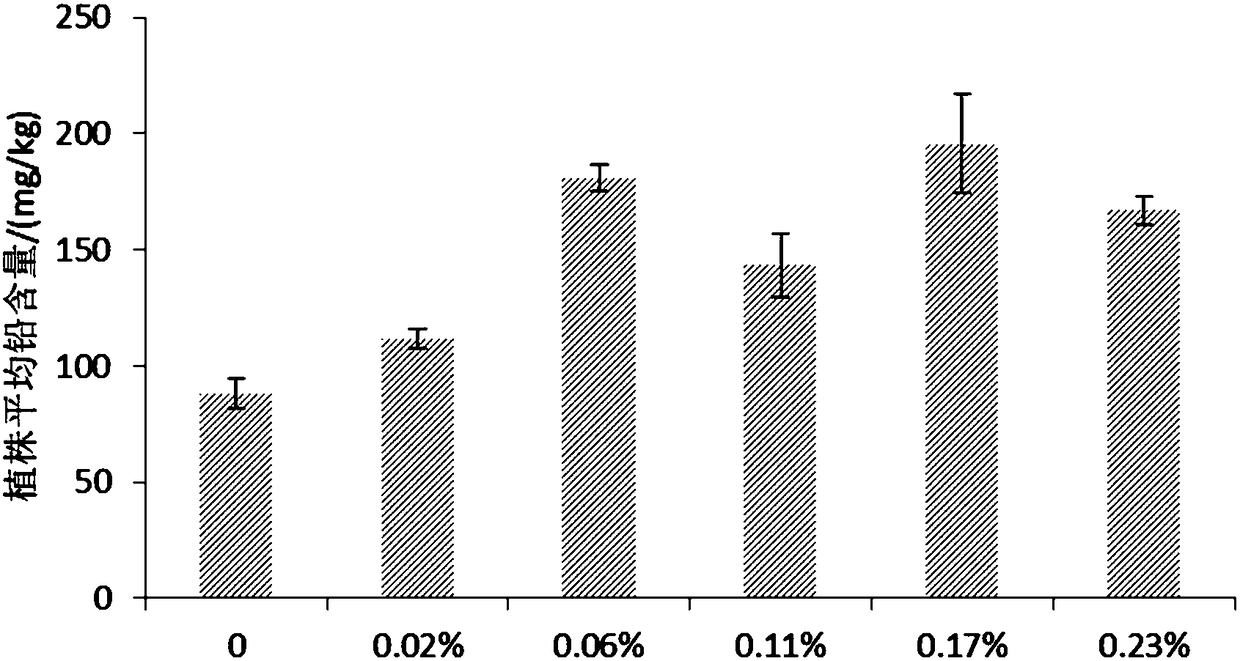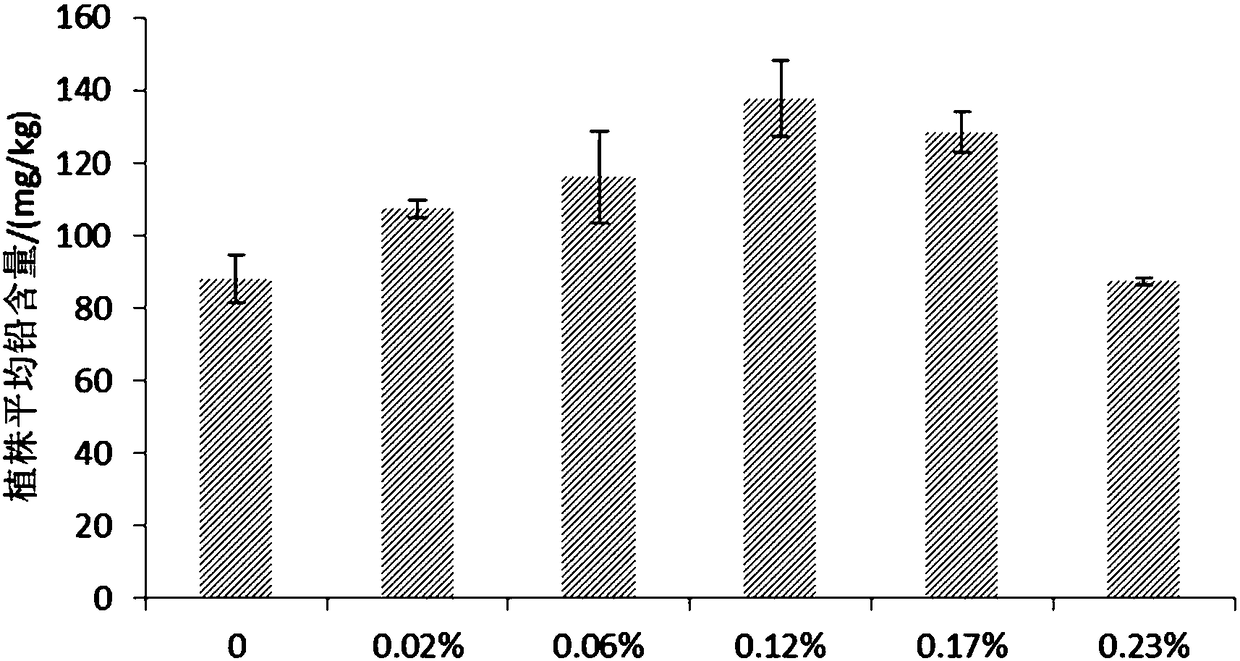Method of repairing lead-polluted alkaline soil in drought area by reinforcing arbors with chelating agent
A chelating agent and lead-polluted technology, applied in the restoration of polluted soil, etc., can solve problems such as unseen, methods of repairing lead-polluted alkaline soil in arid areas, to speed up mobility, promote extraction and restoration capabilities, and avoid Diffusion effect
- Summary
- Abstract
- Description
- Claims
- Application Information
AI Technical Summary
Problems solved by technology
Method used
Image
Examples
example 1
[0048] Example 1: Green high-efficiency chelating agent screening experiment
[0049] Experiments were conducted to determine the restoration effect of chelating agent-enhanced arbor species. Air-dry the soil and sieve it, add 1.5g of lead acetate per kilogram of soil, mix well, passivate for 60 days, and distribute it in cultivation pots. The arbor seeds to be tested were selected, disinfected, rinsed, soaked, germinated, and then sown. The cultivation pot was placed in an outdoor dry shed, and the water was controlled by weighing method every day to keep the relative soil moisture content at 60%. After the seeds germinate, thin the seedlings, set the plants, and maintain routine management. After 3 to 4 months, when the seedlings are in the prime growth stage, add the chelating agent in 3 times. The types of chelating agents include S,S-ethylenediamine disuccinic acid (S,S-EDDS), nitrilotriacetic acid (NTA), For citric acid (CA), the accumulative application amount of chel...
example 2
[0055] Example 2: Arbor seed lead tolerance test (germination test)
[0056] The randomized block experiment design was adopted, the lead was mixed and added to the alkaline soil, and different treatments were set up with a lead content of 0-15g / kg, the passivation culture was carried out for 60 days, and the samples were divided into glass petri dishes. Select arbor species such as eucalyptus, arborvitae, Chinese pine, black locust, etc., disinfect, soak, and then sow them into petri dishes, cultivate them in an indoor light incubator, and manually weigh them to control the water.
[0057] The results showed that within the range of 0-5.0g / kg lead content, the seed germination rate and vigor index of eucalyptus, Chinese pine and black locust did not change significantly (P>0.05); the stem length and fresh weight of seedlings did not change significantly (P >0.05). In the range of 5.0-8.0g / kg lead content, lead has a certain inhibitory effect on various indicators of seed ger...
example 3
[0058] Example 3: Arbor seed drought tolerance test (germination test)
[0059] The stage of plant seed germination or seedling growth is the stage with the weakest stress resistance. Soil culture experiments were conducted to simulate different drought stresses by artificially controlling soil moisture. Set up different moisture gradients, select seeds, sow them in petri dishes filled with soil with different moisture contents, cultivate them in an indoor incubator, and manually weigh them to control the moisture, without applying any fertilizer during this period.
[0060] The results showed that within the range of 40% to 100% relative soil water content, arbor seeds and shrub seeds could germinate, and the relative germination rates were all above 50%. decreased, showing a decreasing trend, but the change was not obvious (P<0.05), and the inhibitory effect was small, indicating that the selected arbor species (Euan, arborvitae, Chinese pine, black locust) had strong droug...
PUM
 Login to View More
Login to View More Abstract
Description
Claims
Application Information
 Login to View More
Login to View More - R&D
- Intellectual Property
- Life Sciences
- Materials
- Tech Scout
- Unparalleled Data Quality
- Higher Quality Content
- 60% Fewer Hallucinations
Browse by: Latest US Patents, China's latest patents, Technical Efficacy Thesaurus, Application Domain, Technology Topic, Popular Technical Reports.
© 2025 PatSnap. All rights reserved.Legal|Privacy policy|Modern Slavery Act Transparency Statement|Sitemap|About US| Contact US: help@patsnap.com



